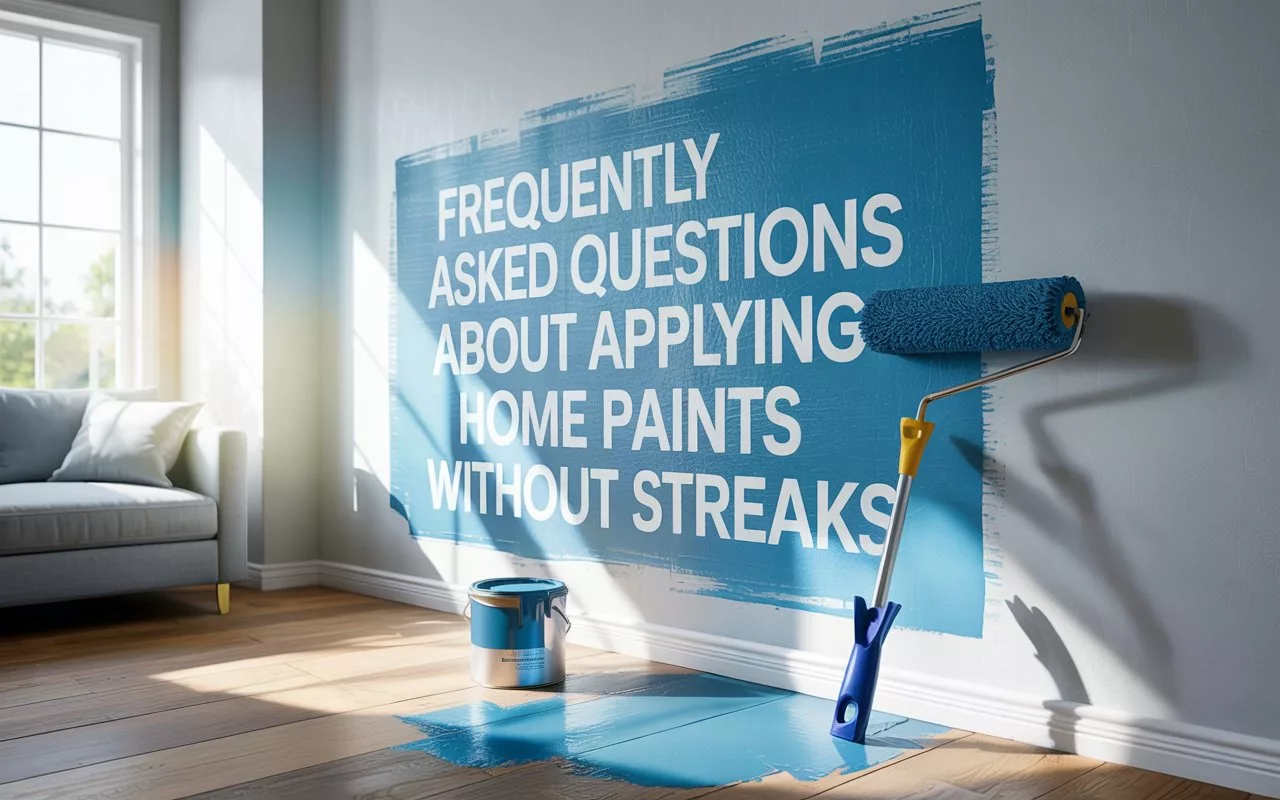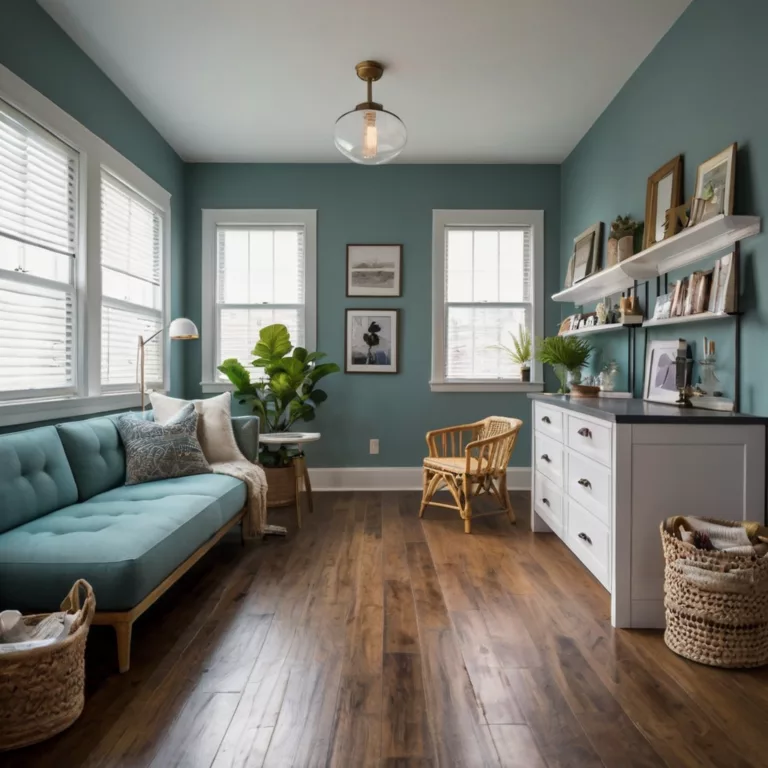How to Apply Home Paints Without Streaks:
Understanding Why Paint Streaks Occur
Have you ever spent hours painting a room only to discover unsightly streaks once the paint dried? Applying home paints without streaks requires more than just a steady hand it demands proper preparation, quality materials, and the right techniques. In this comprehensive guide, we’ll explore everything you need to know about achieving a flawless, streak-free paint finish that will transform your living spaces.
Before diving into the solutions, let’s understand why streaks happen when applying home paints without proper techniques. Paint streaks typically occur due to:
- Inconsistent application pressure when using brushes or rollers
- Low-quality painting tools that don’t distribute paint evenly
- Improper paint consistency that’s either too thick or too thin
- Painting in poor lighting conditions that hide imperfections until it’s too late
- Working too slowly, allowing paint to partially dry before completing a section
Understanding these causes is the first step to applying home paints without streaks and achieving professional-looking results.
Essential Supplies for Streak-Free Home Paint Application
To apply home paints without streaks, you’ll need to invest in quality supplies. Here’s what professionals recommend:
High-Quality Paint
The foundation of streak-free painting begins with high-quality paint. Premium paints offer:
- Better pigmentation for even coverage
- Superior flow characteristics that help eliminate brush marks
- Longer open time, giving you more opportunity to work with the paint before it sets
Consider brands like Benjamin Moore or Sherwin-Williams for their reputation for excellent coverage and self-leveling properties.
Professional-Grade Applicators
When it comes to applying home paints without streaks, your tools matter tremendously:
- Brushes: Opt for synthetic bristle brushes with flagged (split) ends for latex paints
- Rollers: Choose microfiber or woven rollers with appropriate nap length for your surface
- Roller frames: Select sturdy frames that won’t bend during application
- Extension poles: These help maintain consistent pressure for ceiling and wall painting
Surface Preparation Materials
Proper surface preparation is crucial for applying home paints without streaks:
- Sandpaper (various grits)
- Spackle for filling holes
- Caulk for sealing gaps
- TSP cleaner to remove grease and grime
- Primer appropriate for your surface
Step-by-Step Guide to Applying Home Paints Without Streaks

1. Thorough Surface Preparation
The most critical step in applying home paints without streaks is proper preparation. A smooth foundation leads to a smooth finish.
Clean the Surface: Remove all dust, dirt, and grease using appropriate cleaners. For kitchen walls, use a degreasing agent; for bathroom walls, use a cleaner that removes mildew.
Repair Imperfections: Fill holes with spackle, sand down rough areas, and caulk gaps around trim. Remember that paint will highlight rather than hide imperfections.
Sand Smooth: For previously painted surfaces, lightly sand with 220-grit sandpaper to create a slightly rough texture that helps new paint adhere.
Prime When Necessary: Apply primer when:
- Covering dark colors with lighter ones
- Painting new drywall or bare wood
- Covering stains or water damage
- Painting over glossy surfaces
2. Proper Paint Preparation
Correctly preparing your paint is essential for applying home paints without streaks.
Stir, Don’t Shake: Shaking creates bubbles that can lead to streaks. Instead, stir the paint thoroughly with a paint stick.
Strain If Necessary: For older paint that might have lumps, strain it through a paint strainer to ensure smooth application.
Consider a Paint Conditioner: Products like Floetrol for water-based paints can improve flow and increase working time, making it easier to apply home paints without streaks.
Maintain Proper Consistency: If paint is too thick, follow manufacturer guidelines for thinning. Too-thick paint is a common cause of streaking.
3. Mastering Application Techniques
Brush Techniques for Streak-Free Results
When using brushes to apply home paints without streaks:
- Load Properly: Dip only 1/3 of the bristle length into the paint
- Remove Excess: Tap (don’t wipe) the brush against the container’s side
- Use Light Pressure: Let the brush do the work without pressing too hard
- Maintain a Wet Edge: Always paint into previously painted wet areas
- Finish with Long, Smooth Strokes: After applying paint to an area, use light, long strokes in one direction to eliminate brush marks
Roller Techniques for Flawless Walls
Rollers are excellent for large areas, but require proper technique to apply home paints without streaks:
- Use the “W” Method: Apply paint in a rough W pattern about 3 feet square, then fill in without lifting the roller
- Maintain Consistent Pressure: Too much pressure causes drips; too little leaves streaks
- Roll in One Direction for Final Pass: After filling in your W, make all final passes in one direction, from top to bottom
- Keep the Roller Loaded: A dry roller is more likely to create streaks
- Roll Slowly: Fast rolling creates spatter and uneven application
4. Managing Environmental Conditions
Environmental factors significantly impact your ability to apply home paints without streaks:
Temperature: Paint between 50-85°F (10-29°C) for optimal results. Extreme temperatures affect drying time and flow characteristics.
Humidity: High humidity slows drying, while very low humidity speeds it up. Aim for 40-70% humidity when possible.
Ventilation: Ensure good airflow, but avoid strong breezes directly on wet paint.
Lighting: Use bright, angled lighting during application to spot potential streaks before they dry.
Advanced Techniques for Different Surfaces
Trim and Woodwork
Applying home paints without streaks on trim requires:
- Use a high-quality angled sash brush with synthetic bristles
- Paint along the grain of the wood
- Apply thin coats rather than thick ones
- Consider brush-enhancing additives specifically designed for trim paint
For best results with trim, many professionals recommend Purdy brushes paired with cabinet and trim-specific paints that self-level to minimize brush marks.
Ceilings
Ceilings present unique challenges when applying home paints without streaks:
- Use extension poles to maintain a consistent angle
- Work in smaller sections than you would on walls
- Paint the edges first with a brush, then immediately roll adjacent areas
- Consider ceiling-specific paints that stay wet longer for better blending
Textured Surfaces
Textured walls and ceilings require special attention to apply home paints without streaks:
- Choose rollers with a longer nap (1/2″ to 3/4″)
- Apply more paint than you would on smooth surfaces
- Work in smaller sections to ensure adequate coverage in texture crevices
- Consider using a paint sprayer for highly textured surfaces
Troubleshooting Common Streak Problems
Even experienced painters occasionally encounter streaking issues. Here’s how to fix common problems when applying home paints without streaks:
Visible Roller or Brush Marks
Cause: Paint drying too quickly or improper technique.
Solution: Add a paint extender to slow drying time, and apply another coat using proper technique. Check out this helpful guide from Home Depot for more detailed fixes.
Lap Marks
Cause: Painting over partially dried edges.
Solution: Work in smaller sections and maintain a wet edge at all times.
Flashing
Cause: Uneven sealing of the surface or inconsistent paint sheen.
Solution: Apply a quality primer before painting and ensure even application of topcoats.
Professional Tips for Applying Home Paints Without Streaks
The “Two Thin Coats” Rule
Professional painters rely on applying multiple thin coats rather than one thick coat to achieve streak-free results. Thin coats:
- Dry more evenly
- Show fewer brush or roller marks
- Provide better durability in the long run
Strategic Planning
Plan your painting sequence to minimize the chance of streaks:
- Start with ceilings
- Move to walls
- Finish with trim and doors
This order prevents drips and splatters on already-finished surfaces.
Rest Times Between Coats
Follow manufacturer recommendations for drying times between coats. Rushing this process often leads to streaks and other finish problems.
Choosing the Right Paint Finish for Streak-Free Results
Some paint finishes are more forgiving than others when it comes to applying home paints without streaks:
Flat/Matte Finishes
- Most forgiving for hiding imperfections
- Ideal for ceilings and low-traffic walls
- Challenging to clean
- Example: Behr Ultra Matte Interior Paint
Eggshell/Satin Finishes
- Good balance between hiding imperfections and cleanability
- Excellent for living rooms, bedrooms, and hallways
- Requires more careful application than flat finishes
- Example: Valspar Signature Satin Interior Paint
Semi-Gloss/Gloss Finishes
- Most challenging for streak-free application
- Best for trim, doors, and high-moisture areas
- Shows every imperfection in both surface and application
- Example: Sherwin-Williams ProClassic Semi-Gloss
Tools and Technology for Flawless Paint Application
Paint Sprayers
For large areas or when the highest quality finish is desired, consider using a paint sprayer:
- HVLP (High Volume, Low Pressure): Ideal for furniture and cabinets
- Airless Sprayers: Perfect for large wall areas and exteriors
- Electric Handheld Sprayers: Good for DIYers tackling moderate-sized projects
When using sprayers, proper technique is still essential. Maintain consistent distance from the surface and use overlapping passes.
Self-Leveling Paints
Technology in paint manufacturing has produced self-leveling formulations that reduce streaking:
- These paints flow out after application, minimizing brush and roller marks
- They typically cost more but save time and frustration
- They work best when applied according to manufacturer directions
Maintaining Your Streak-Free Finish
Once you’ve successfully applied home paints without streaks, protect your work:
Proper Cleaning Methods
Different paint finishes require different cleaning approaches:
- For flat/matte finishes: Dust gently and spot clean with minimal moisture
- For eggshell/satin: Clean with mild soap and water, avoiding harsh scrubbing
- For semi-gloss/gloss: These can handle more vigorous cleaning with appropriate cleaners
Touch-Up Techniques
When damage occurs, proper touch-up technique prevents new streaks:
- Clean the area thoroughly
- Use the original paint if possible
- Apply with the same type of applicator used originally
- Feather the edges to blend with existing paint
Environmental and Health Considerations
Low-VOC and Zero-VOC Options
Traditional paints contain volatile organic compounds (VOCs) that can affect indoor air quality and cause health issues. When applying home paints without streaks, consider:
- Low-VOC formulations: These contain reduced levels of harmful compounds
- Zero-VOC options: The healthiest choice for indoor spaces
- Natural paints: Made from ingredients like clay, milk protein, and natural oils
These eco-friendly options have improved dramatically in recent years and now offer performance comparable to traditional paints while being safer for your home. Check out Earthpaint for environmentally responsible options.
Proper Disposal of Paint Materials
Responsible disposal of painting materials is important:
- Allow latex paint cans to dry completely before disposal
- Check with local waste management for paint recycling programs
- Never pour paint down drains or storm sewers
Working with Professional Painters
If you decide to hire professionals to apply home paints without streaks, here’s what to look for:
- Proper licensing and insurance
- A portfolio of previous work
- Detailed written estimates
- References from previous clients
- Clear communication about preparation processes
Professional painters bring expertise and specialized equipment that can achieve superior results, especially for challenging projects.
Conclusion
Applying home paints without streaks is achievable with proper preparation, quality materials, and the right techniques. The key takeaways from this guide include:
- Invest in high-quality paints and tools
- Prepare surfaces thoroughly
- Master proper application techniques
- Work in appropriate environmental conditions
- Apply multiple thin coats rather than one thick coat
- Choose the right paint finish for your project
By following these guidelines, you’ll transform your living spaces with beautiful, streak-free painted surfaces that look professionally done, regardless of your experience level.
Frequently Asked Questions About Applying Home Paints Without Streaks

What is the single most important factor in achieving streak-free paint results?
Maintaining a wet edge while painting is perhaps the most crucial factor. This means never allowing the edge of your painted section to dry before painting the adjacent area.
Can cheap paint ever provide streak-free results?
While economy paints can sometimes perform adequately, they generally lack the flow properties and leveling agents that make premium paints easier to apply without streaks. The additional cost of quality paint usually pays for itself in better results and fewer required coats.
How long should I wait between coats to avoid streaking?
Always follow manufacturer recommendations, typically 2-4 hours for water-based paints and 24 hours for oil-based products. Rushing between coats often leads to streaking and adhesion problems.
Are paint sprayers guaranteed to eliminate streaks?
Paint sprayers can reduce streaking when used correctly, but improper technique can still result in uneven application. Proper distance, overlap, and motion are essential regardless of the application method.
What’s the best way to fix streaks in already-dried paint?
For minor streaking, light sanding followed by another coat applied with proper technique usually solves the problem. For severe cases, sanding the entire surface and reapplying may be necessary.
Art11deco







